The Torban Hall legacy: part I — the main house
A haven of leisure, relaxation, and most of all family
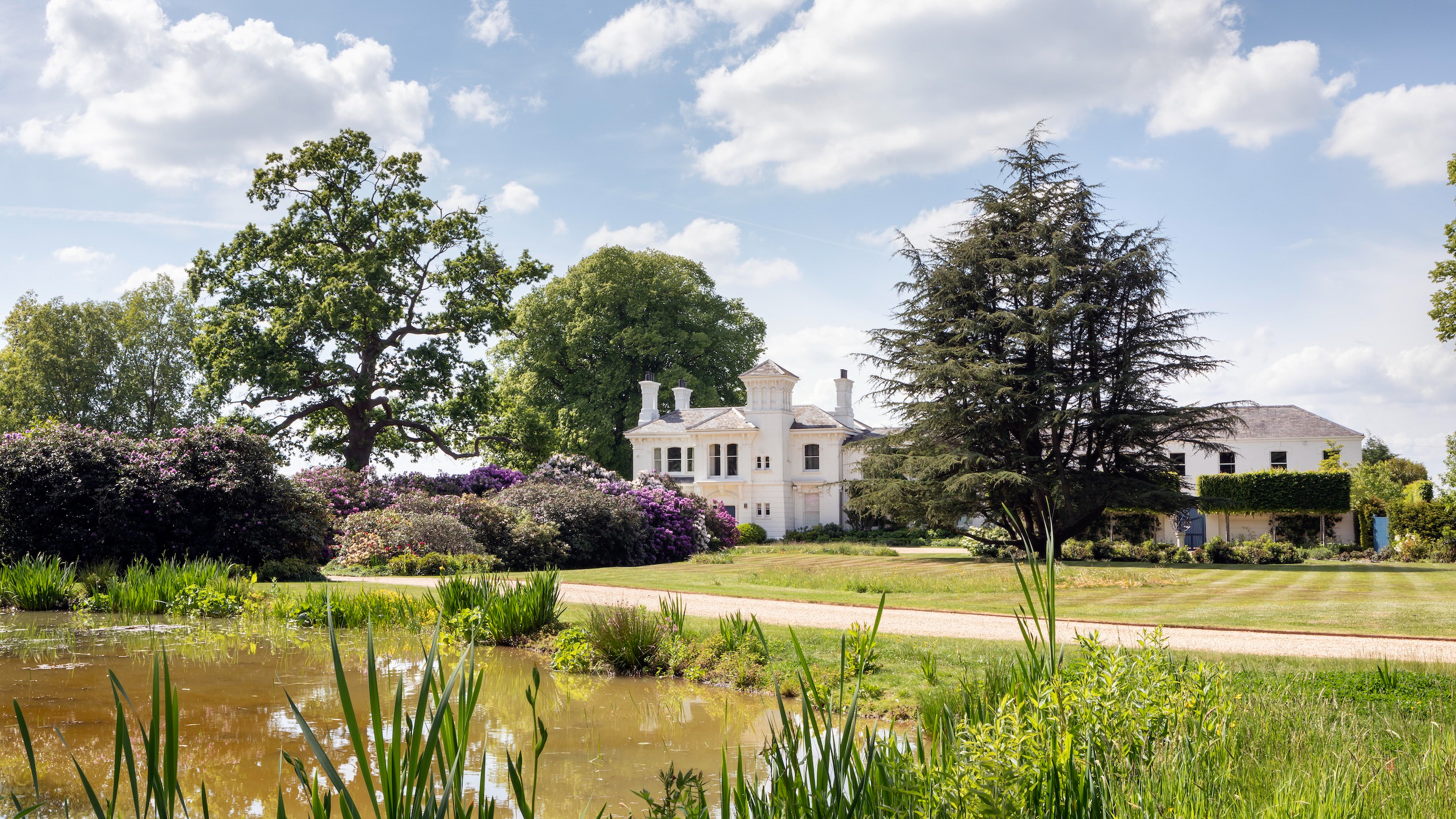
Torban Hall: a Buckinghamshire country residence with a distinguished legacy.
For four decades, Torban Hall was home to the family owners of a well-known sporting brand and is said to be the place where prominent young royals, in the mid-1900s, learnt to play tennis. In its latest incarnation, Torban Hall continues to be a place to play and relax, away from the hustle and bustle of the outside world.
We spoke to Jonathan Dale, owner and co-director of Jane Duncan Architects + Interiors, about Torban Hall’s recent design journey and working alongside Barr Build on this extensive two-phase remodelling, extension, and renovation project.
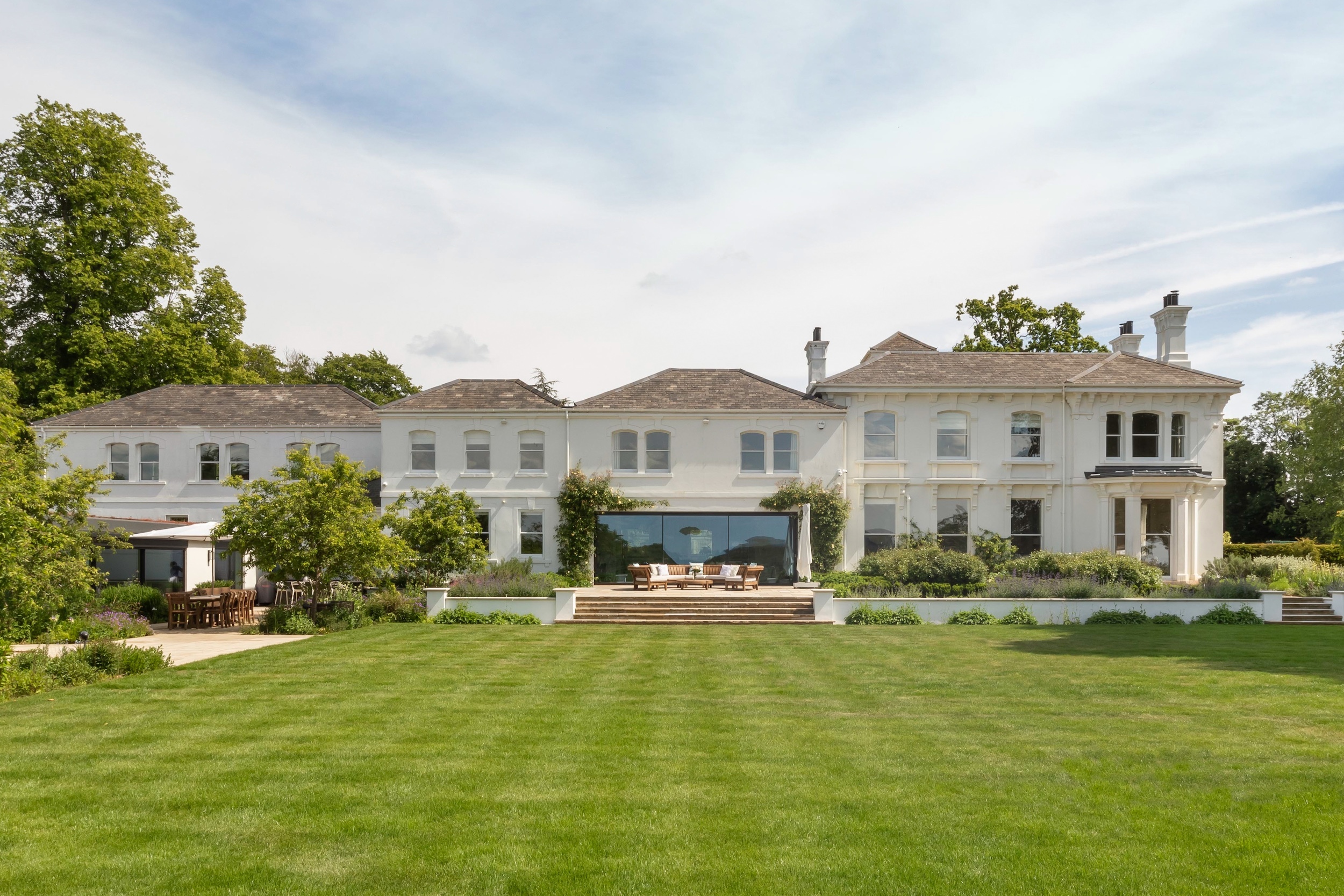
Having worked closely with our clients on their previous renovation, Jonathan had a finely tuned understanding of what they needed from their future home. The first time our clients viewed Torban Hall, they dismissed it as an unfeasible proposition… but fortunately, something drew them back for a second look, this time with trusted architect Jonathan in tow. Having briefly assessed the property and some of its obvious issues, Jonathan took out his notebook and redrew the central ground floor section of the property. His sketch showed how a set of muddled, disjointed rooms, currently on a split level, could become a large, cohesive single-level kitchen-living space, forming the heart of the home our clients were searching for. Although there would be many other interventions to come, this one change would be the key to our clients’ decision to move ahead with the purchase and to embrace what would become a transformational project.
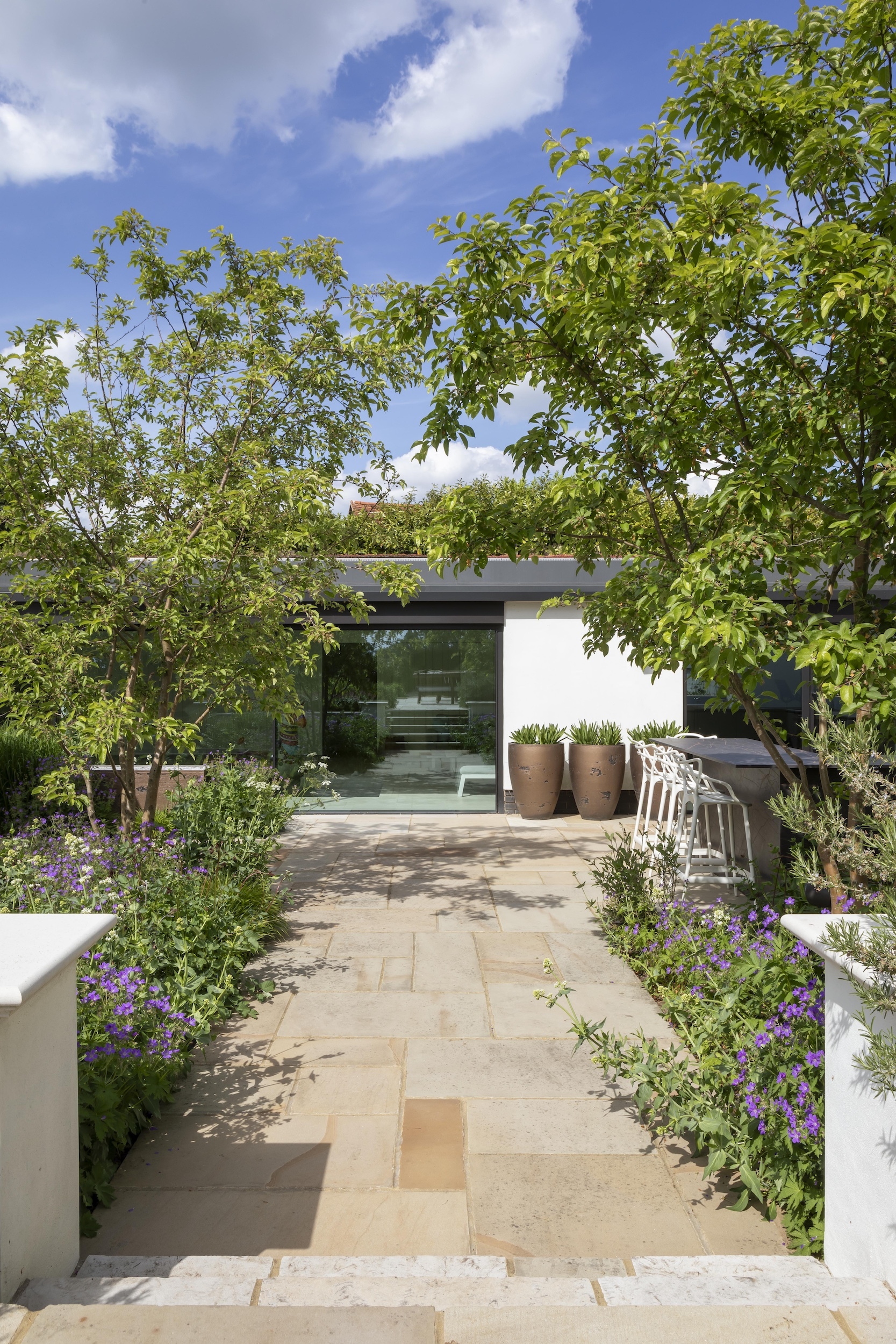
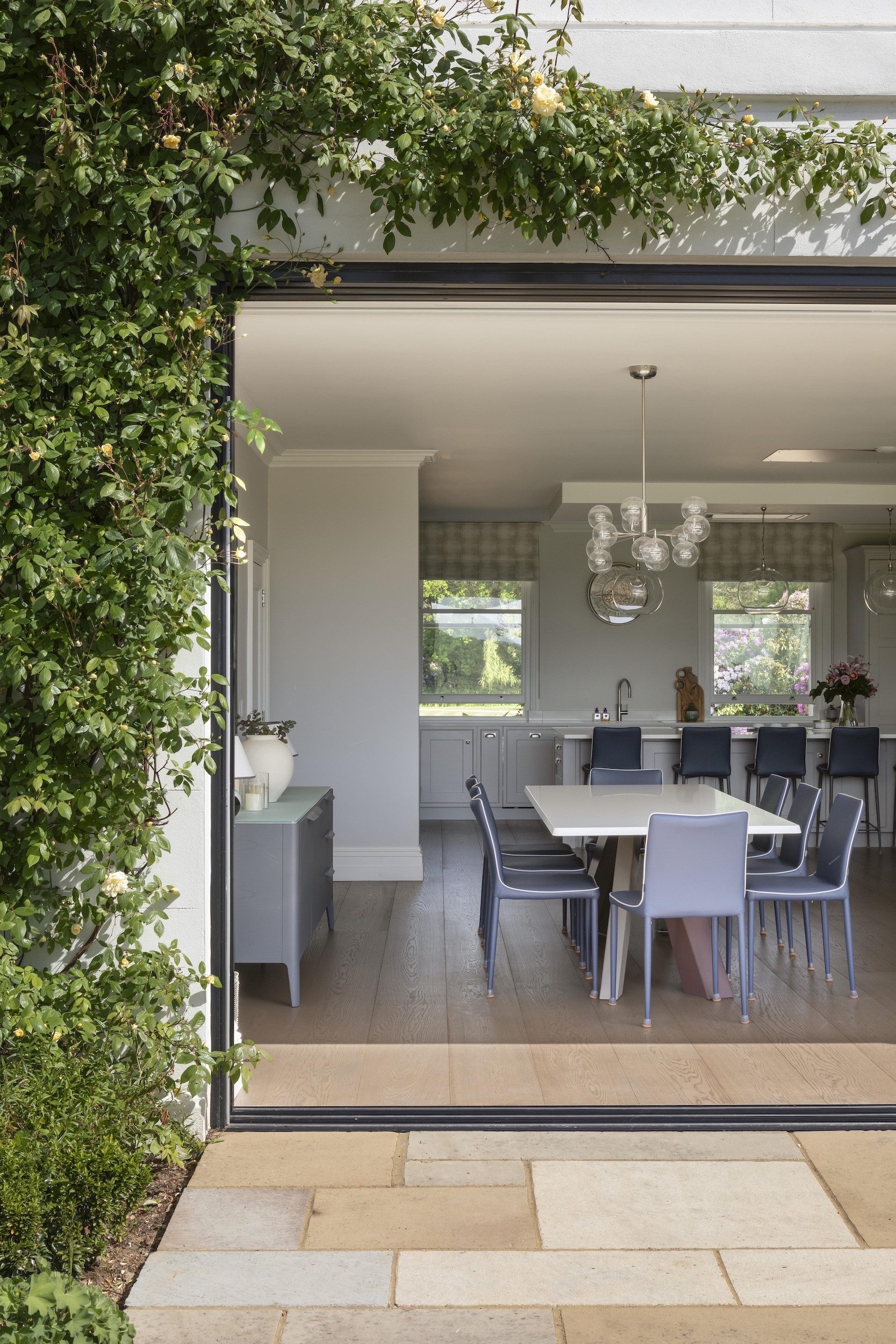
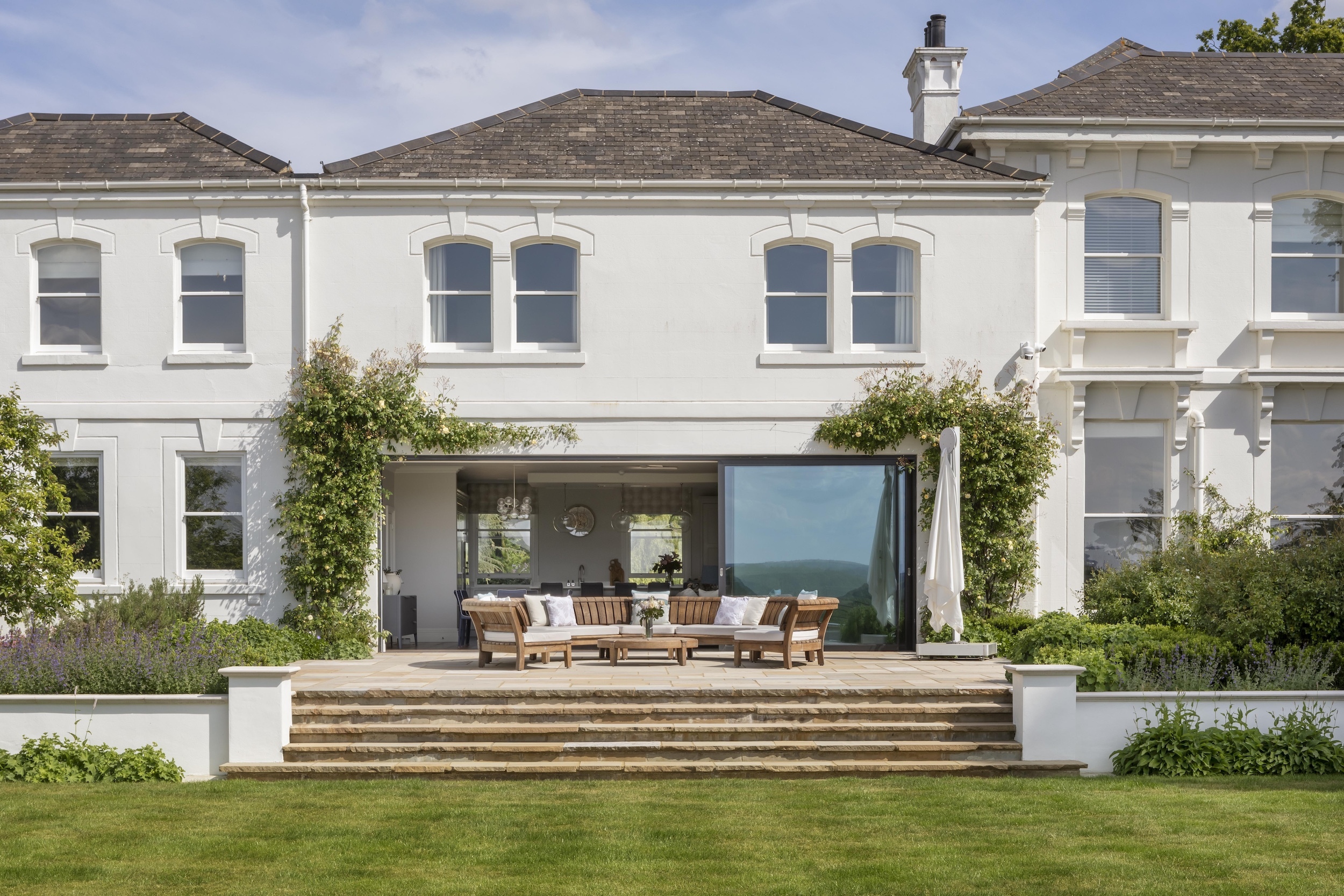
“The overarching principle was to keep it simple,” says Jonathan. “We were lucky to be presented with a house which could do some of the hard work for us, making the design process straightforward and organic.”
The ground-floor layout was such that with the internal doors open, you could see from one end of the house to the other. There was no voyage of discovery — just what was, in essence, a very long corridor! In amongst this, the centre of the house had been divided into multiple small rooms, through a sequence of additions, and was set across two levels, leaving a kitchen space that felt small and disjointed.
The newly formed central kitchen-living space is characterised by large modern architectural sliding doors from the glazing experts L2i. The move away from the traditional sash window fenestration, seen throughout the rest of the property, was a purposeful statement, distinguishing the old from the new and forming a central visual for the property's new rear elevation. Designing for both form and function, Jane Duncan Interiors (JDI) zoned the space into kitchen, dining, and lounge areas, incorporating a walk-in larder and modern inset fireplace. Oak flooring warms the space, and the distinctive calming blues continue from outside in.
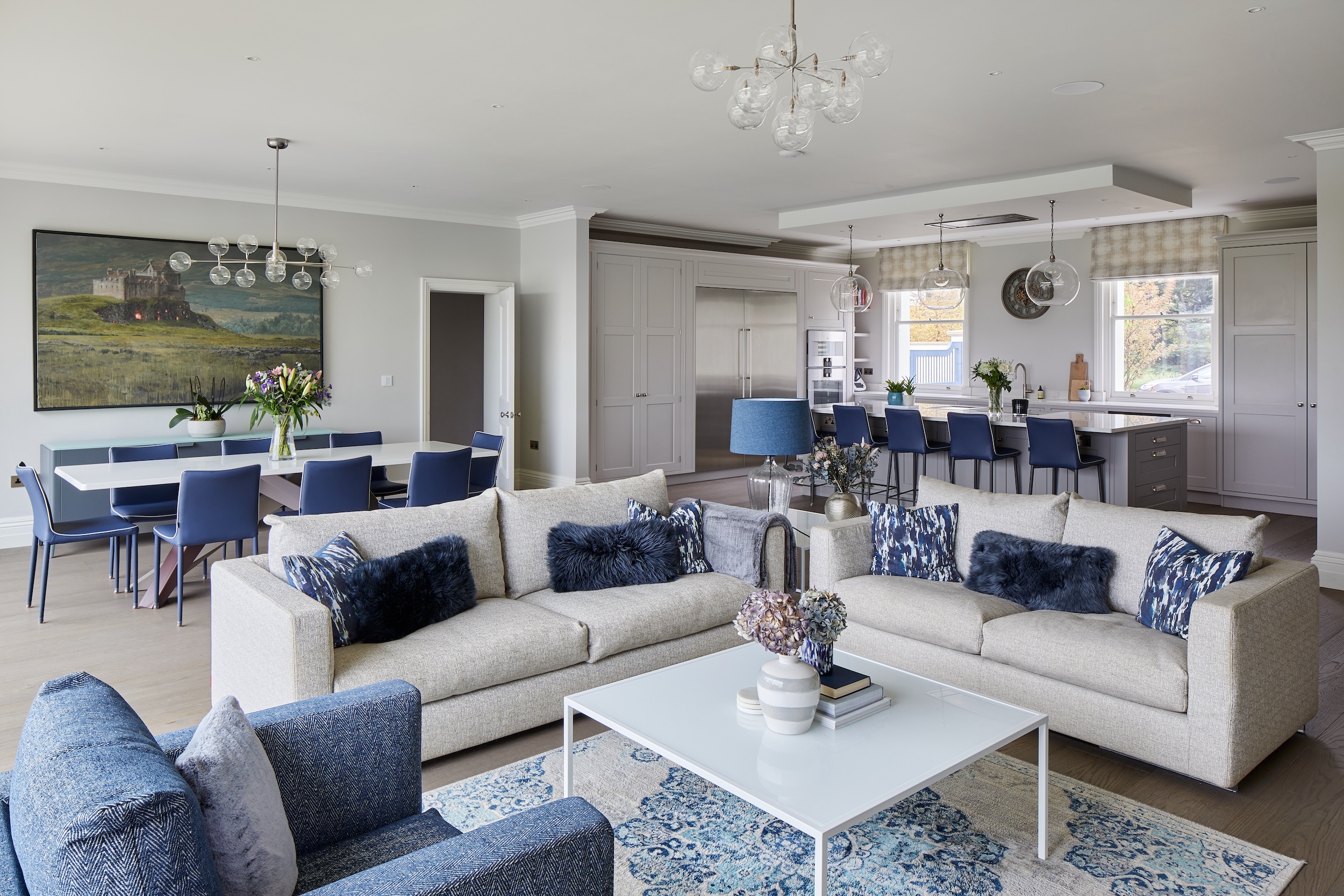
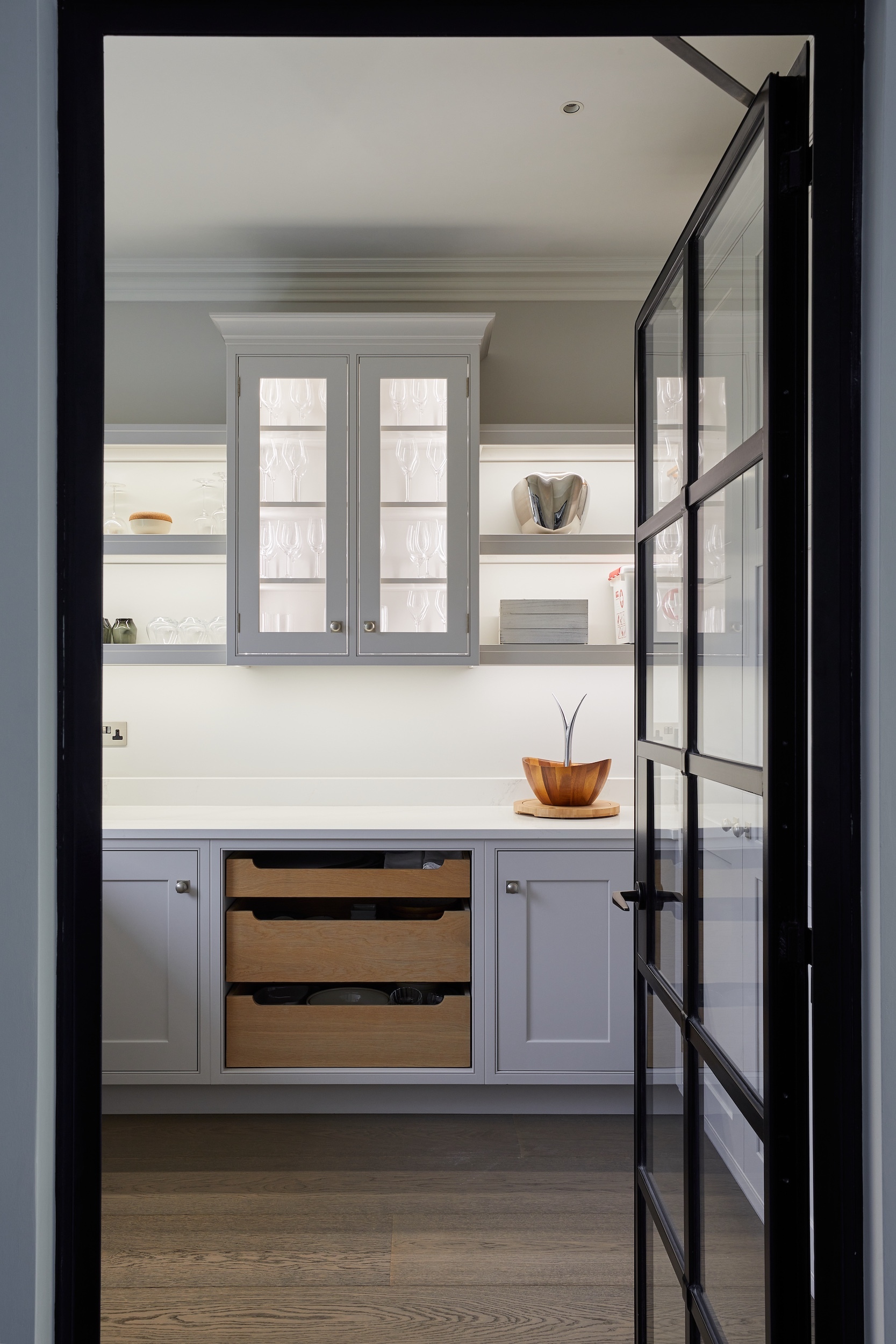
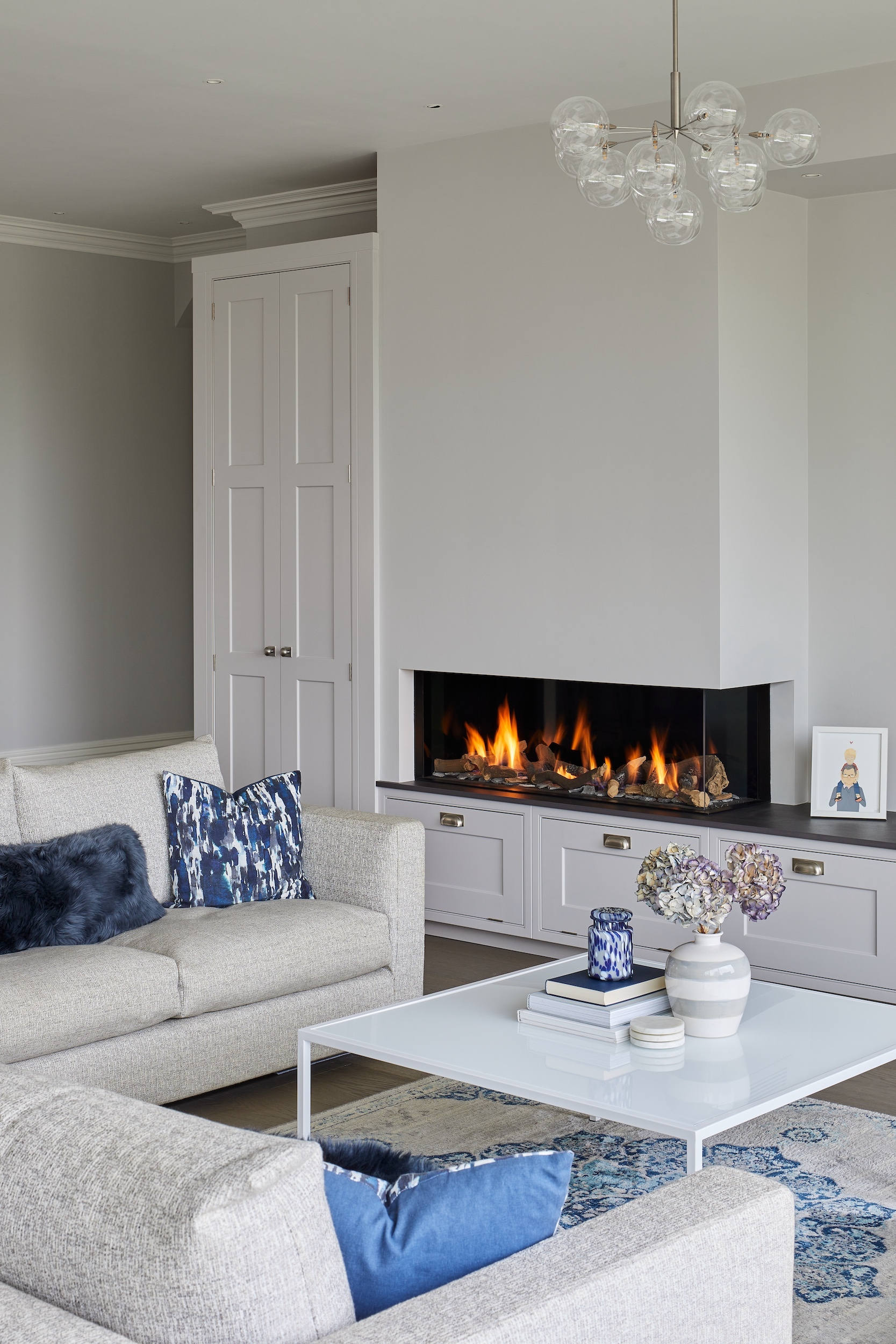
In the oldest part of the house, classic lines, high ceilings, and original features were celebrated. Barr Joinery, amongst other trusted specialist craftspeople, worked alongside the Barr Build team. The whole house was carefully stripped back to bare bones and sympathetically reformed, complete with the requisite modern infrastructure and mechanical and electrical systems.
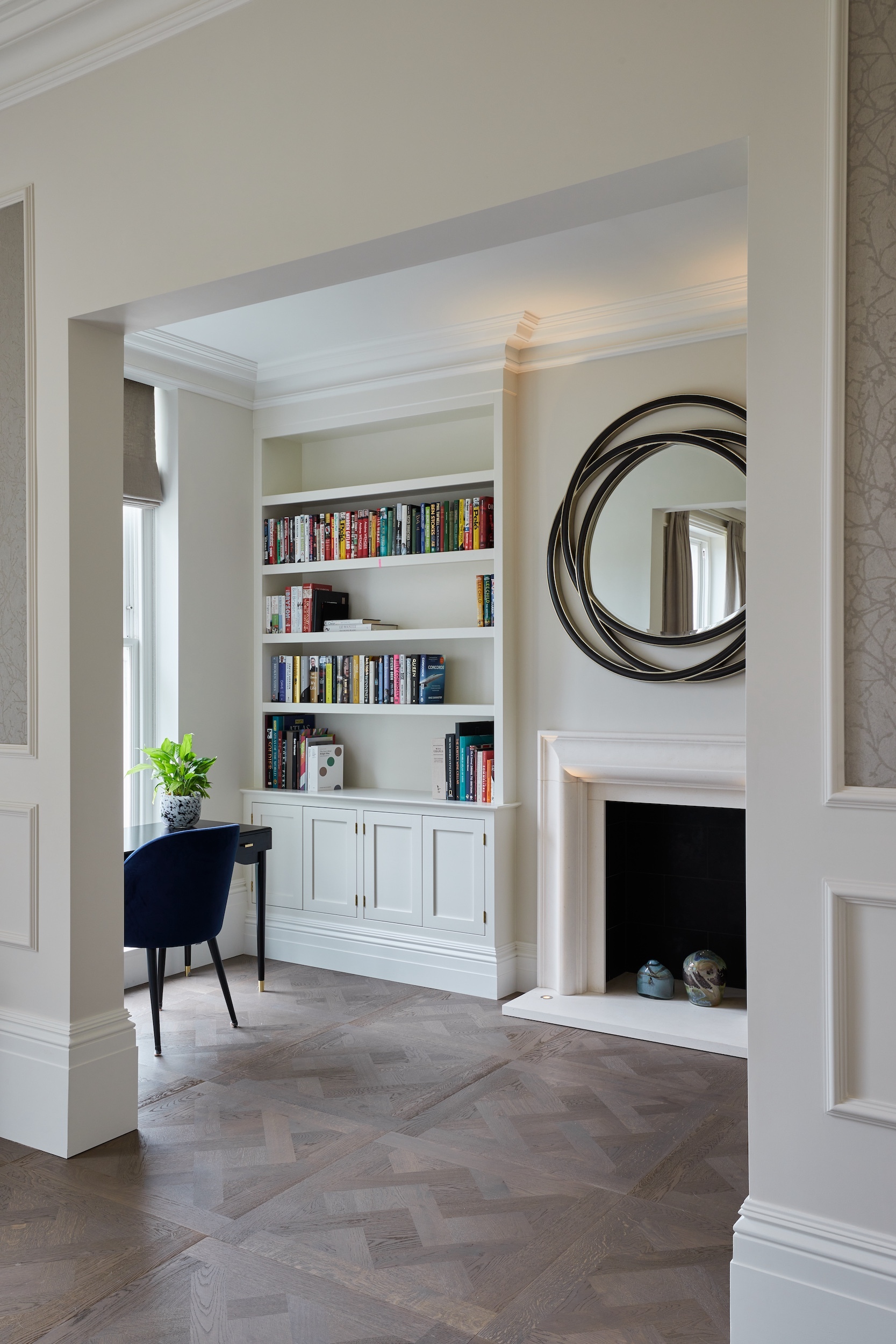
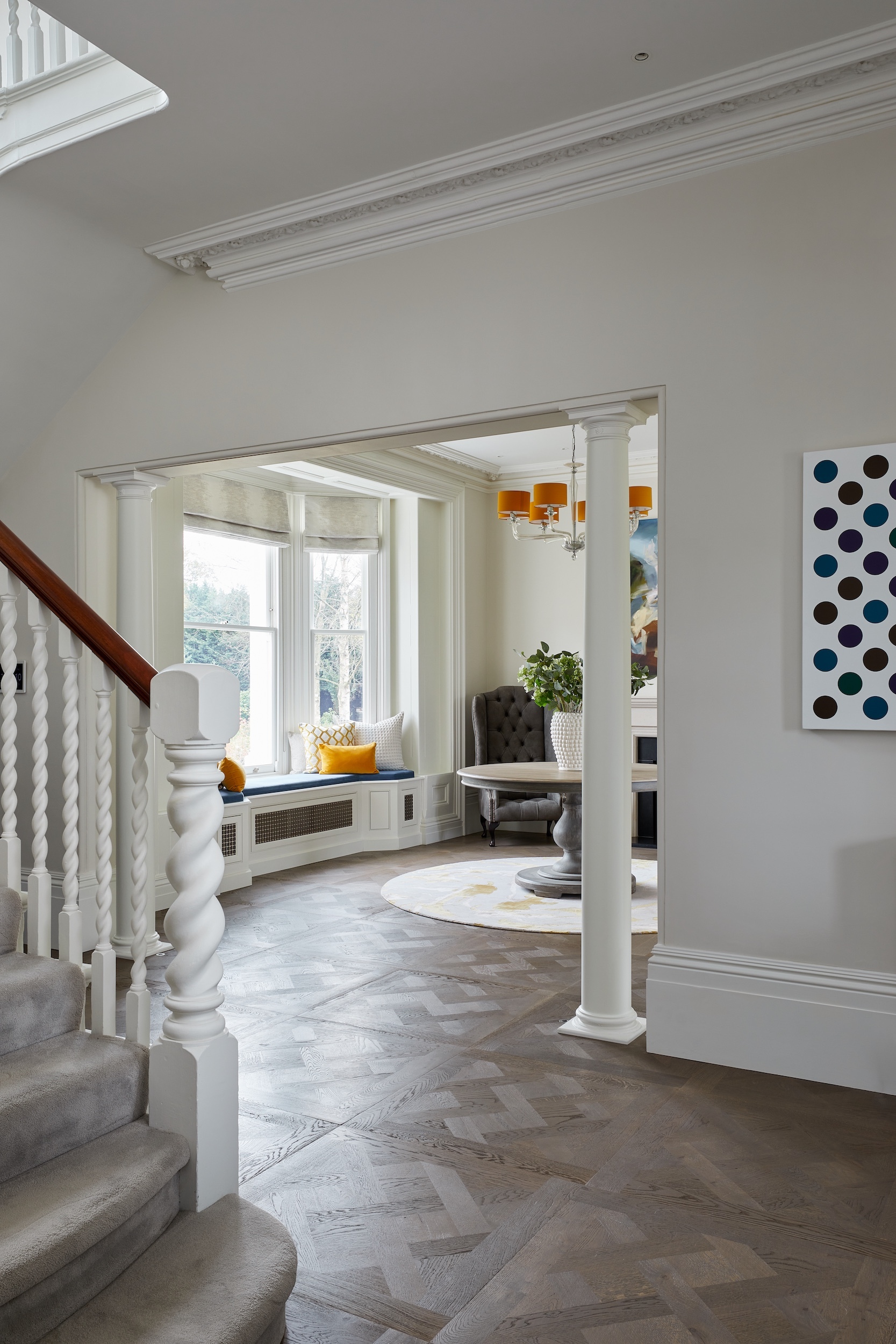
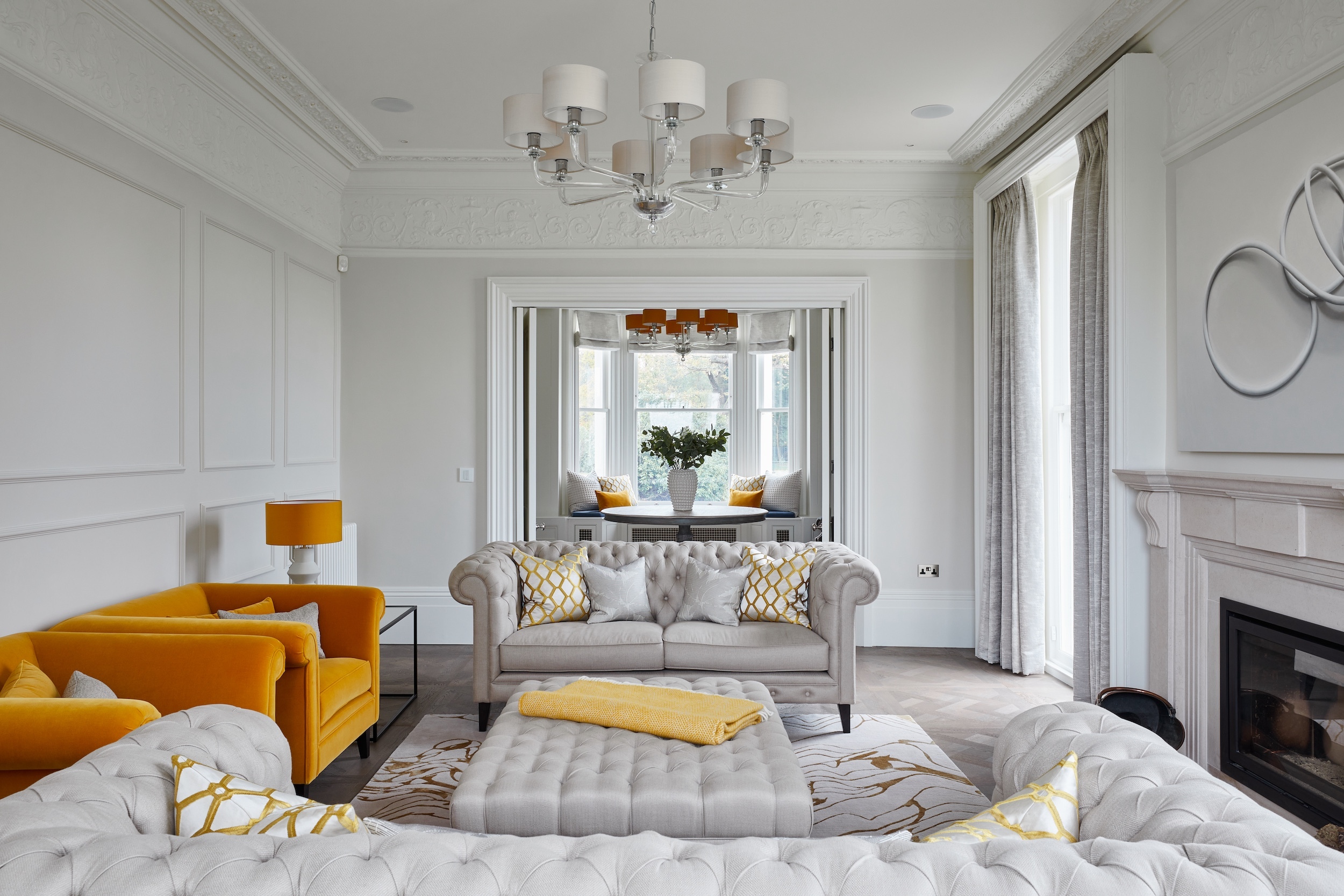
The dining hall, too large for our clients’ requirements in its original form, was partially sectioned with a traditional opening to create a library. A new electronic trap door and staircase leading to the renovated wine cellar were built into the hallway, allowing safe access as required. Staircases, fireplaces, doorways, and mouldings were restored or matched, and bespoke cabinetry was manufactured to JDI designs to work with both the elegant Victorian proportions of the oldest part of the property and the clean lines of the newer sections.
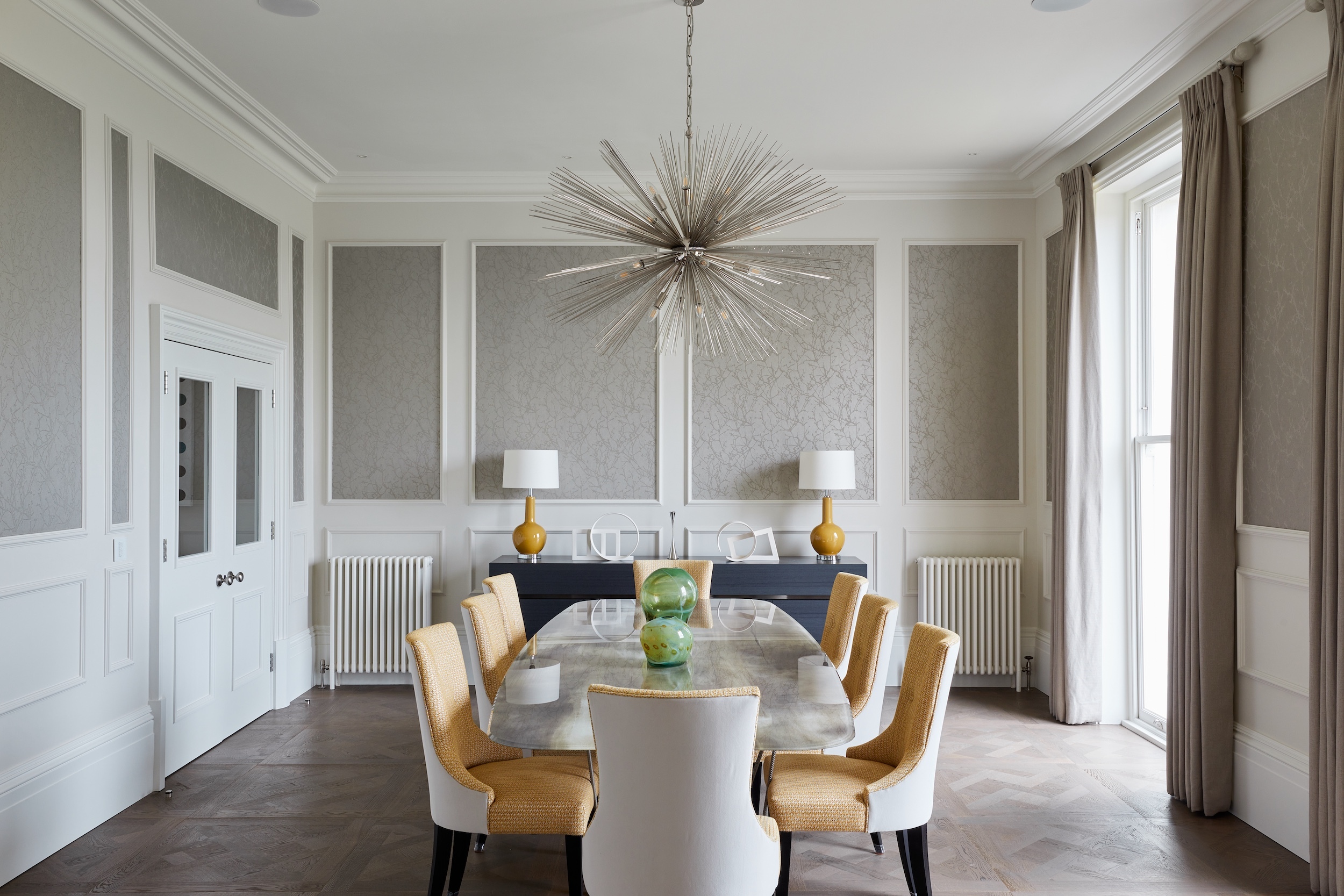
“It was important to us that the people designing and building our home understood what we needed and how we lived our lives,” says the Torban Hall client. “Having met with Barr Build Director David Noonan and worked with Jonathan from JDA on our last property, we knew we were in safe hands.”
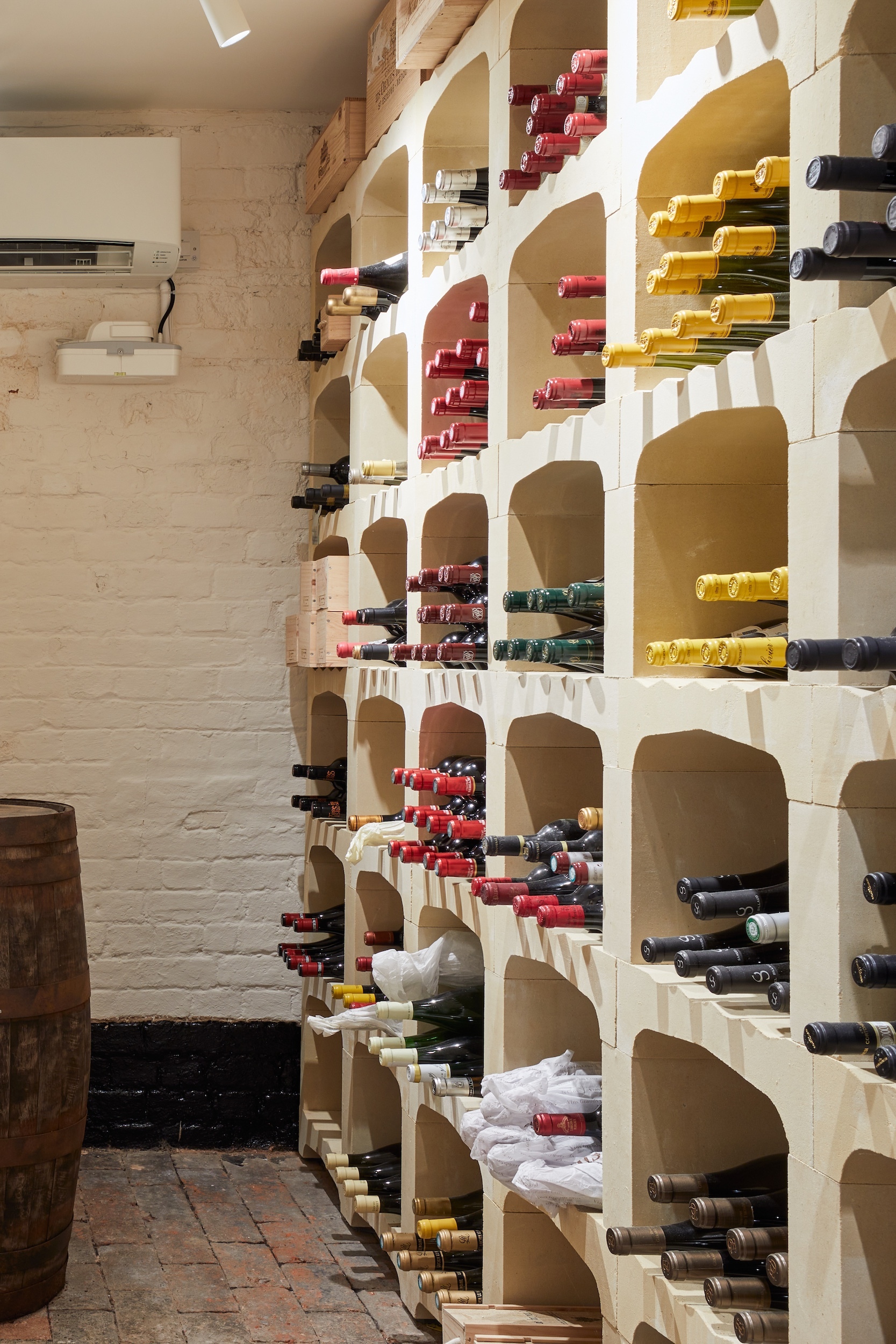
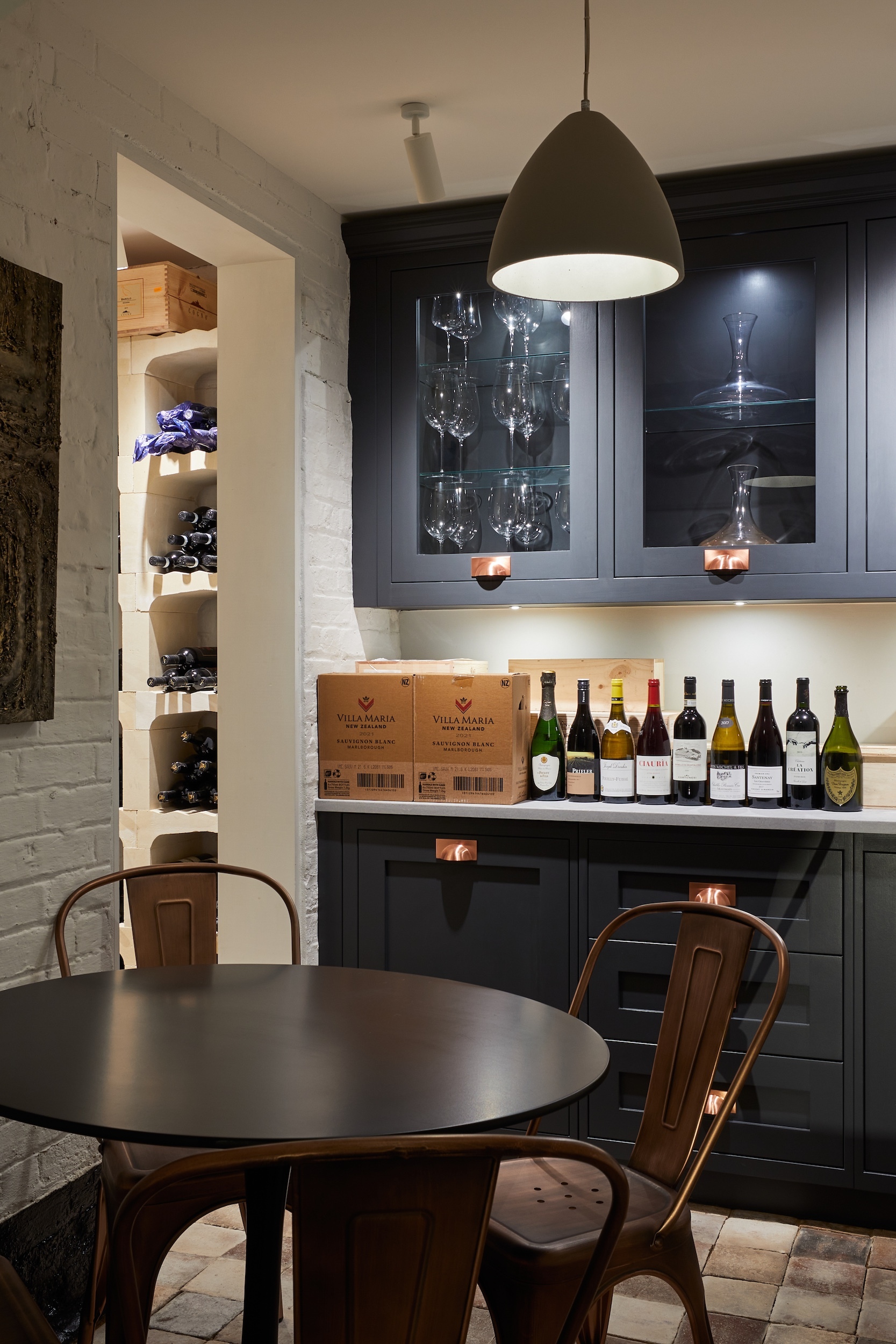
“On the first floor, our main objective was to meet our clients’ accommodation requirements,” says Jonathan. “The couple and their youngest child needed a configuration of bedrooms which felt cosy despite the size of the property — but when their adult children were home, they were keen that the further bedroom accommodation would flow, allowing for integrated larger family living.
“This was when the house did some of our work for us!” Jonathan continues. “We were able to reconfigure the oldest section of the first floor to accommodate the main bedroom suite, with dressing rooms and an ensuite, as well as a child's bedroom, a snug, and a bathroom. Closing this section off by means of an existing doorway, we were able to create what was, in essence, a private apartment. A further section could be easily opened up to bring in another three ensuite bedrooms — allowing the wider family group to share the upstairs.”
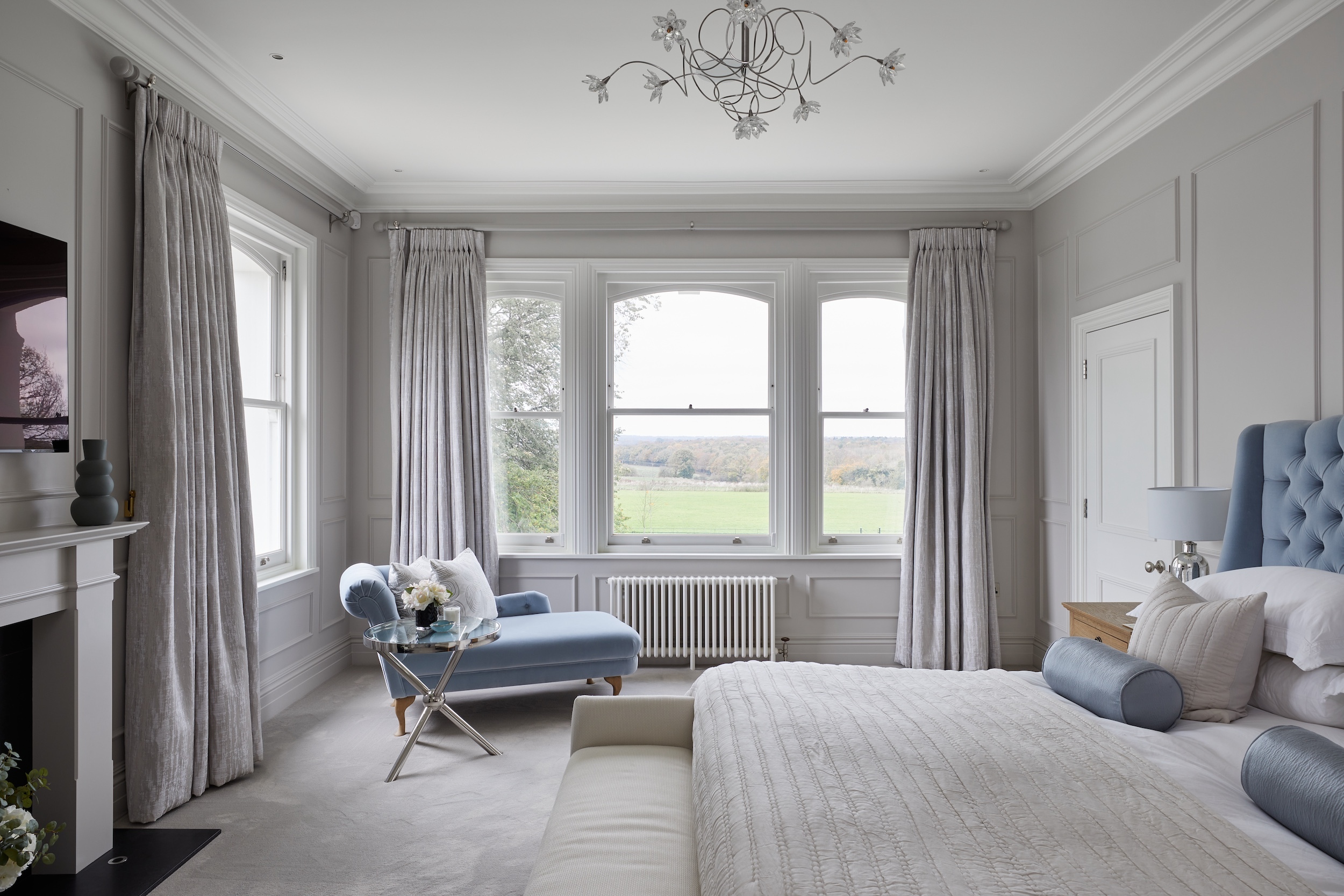
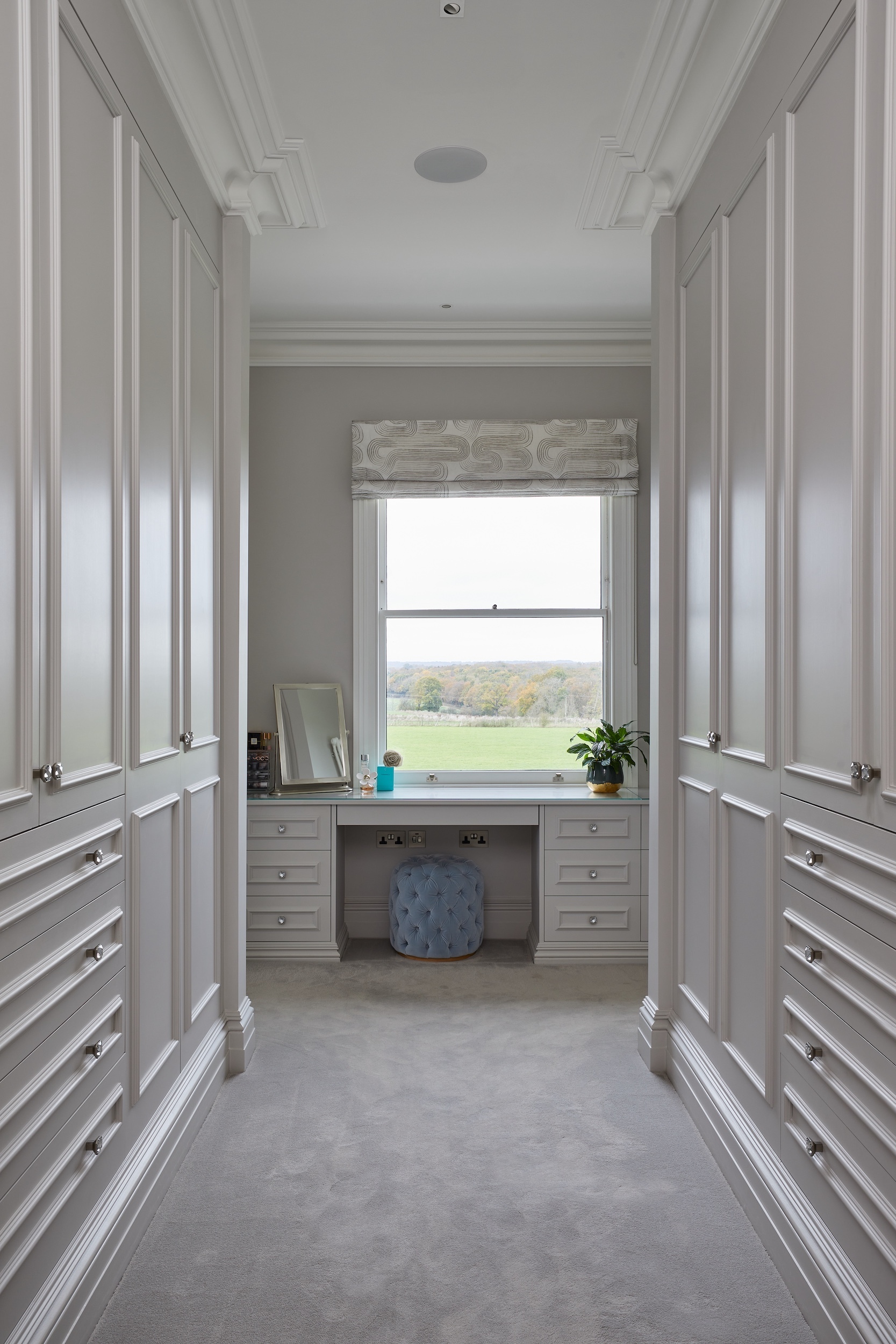
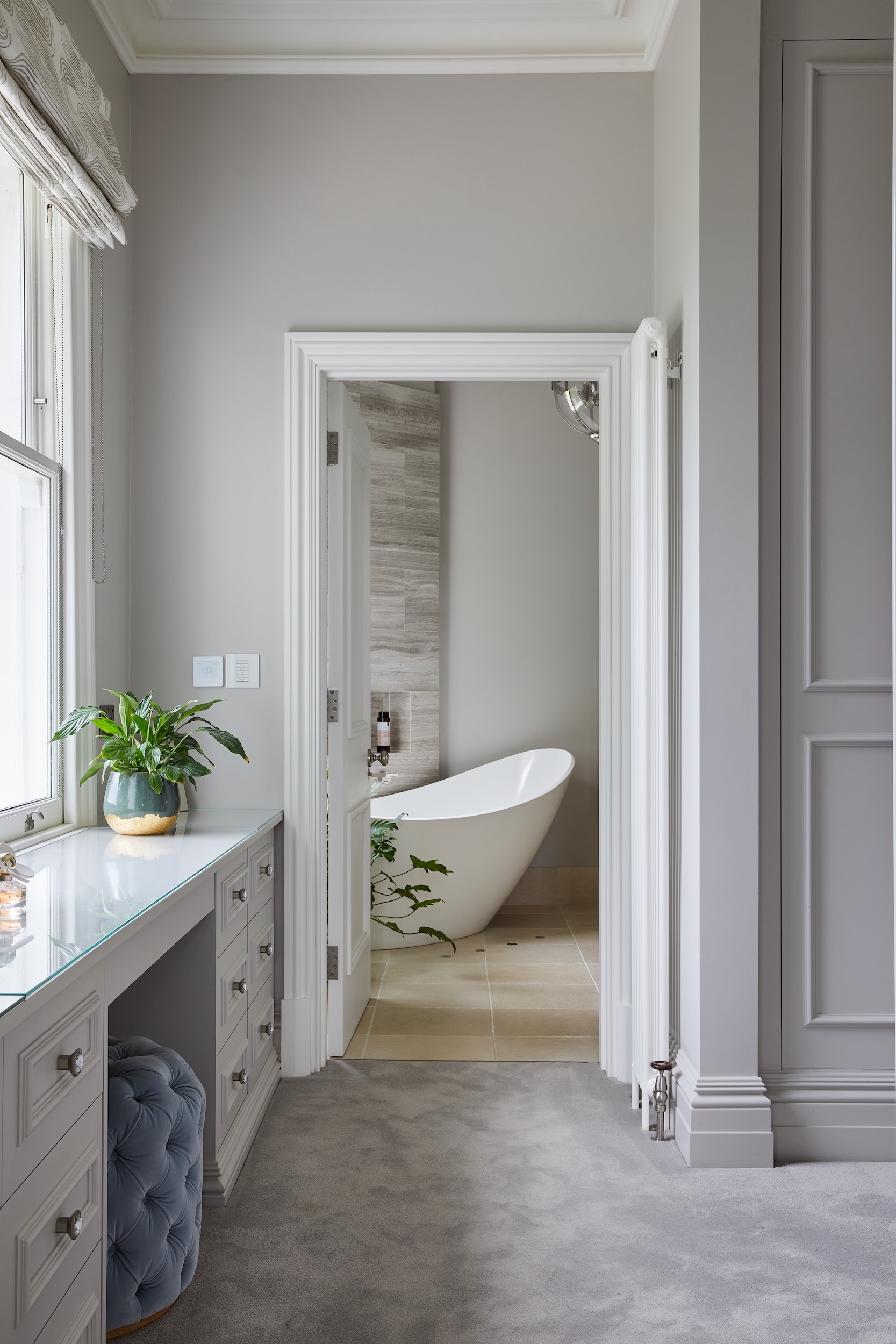
One further self-contained apartment, offering two further bedrooms, a bathroom, and a kitchenette, could be accessed either via its own staircase or by means of a hidden door on the first floor, providing perfectly configured accommodation for staff or guests alike.
At the far end of the house (the functional hub), garaging, storage rooms, the plant room, and the main laundry sit behind a walled courtyard, where a further set of ‘Torban Hall blue’ electric gates, flanked by pleached beach trees, open onto ample parking. Up above sits a 20-metre-long games room, bar and home-cinema, inspired by a much-loved 1930s picture house nearby.
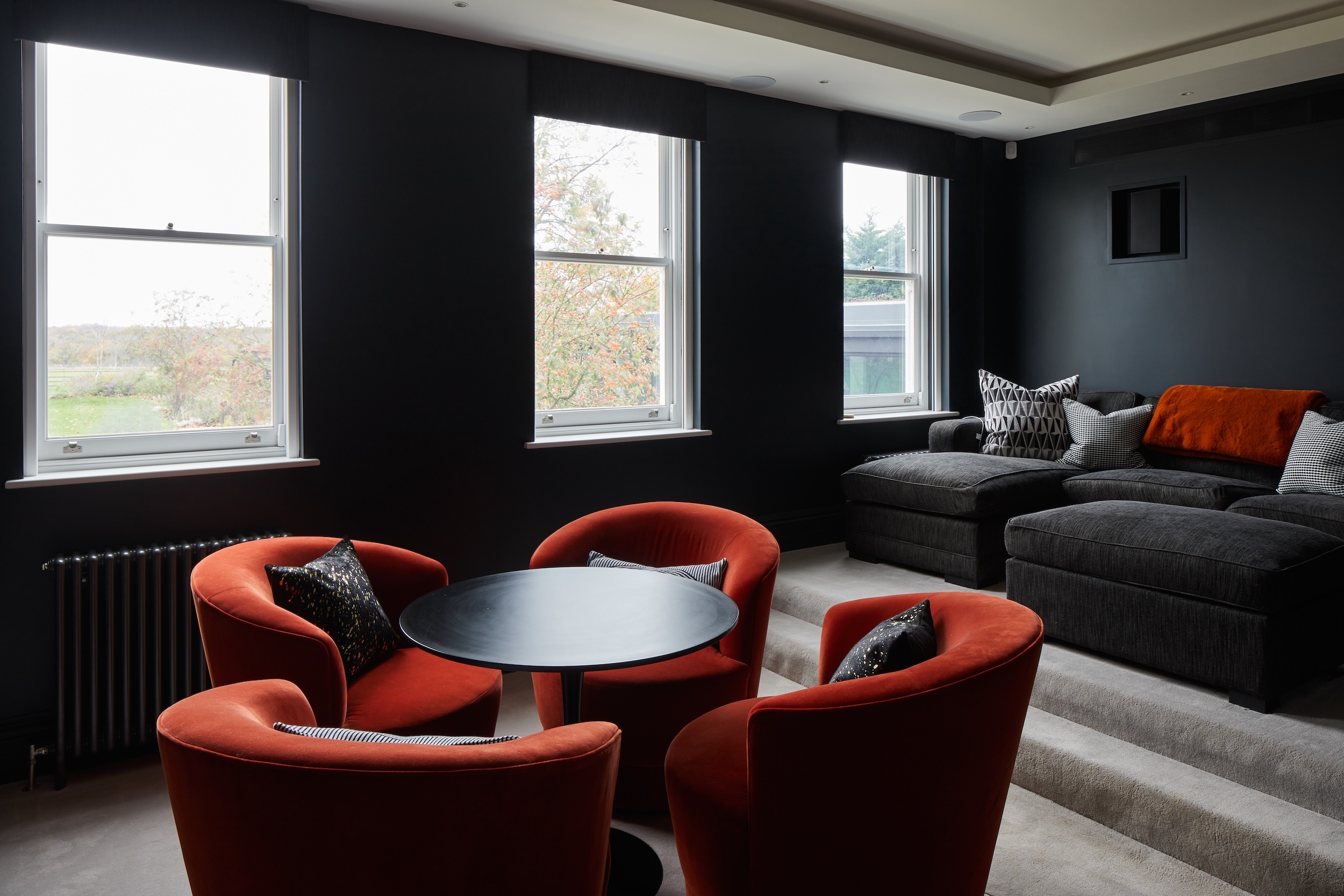
The second phase of the project, which was run in tandem with the main house renovation, was the design and build of a 200-sq-metre detached pool and leisure suite. Read more about the Torban Hall Pool House.
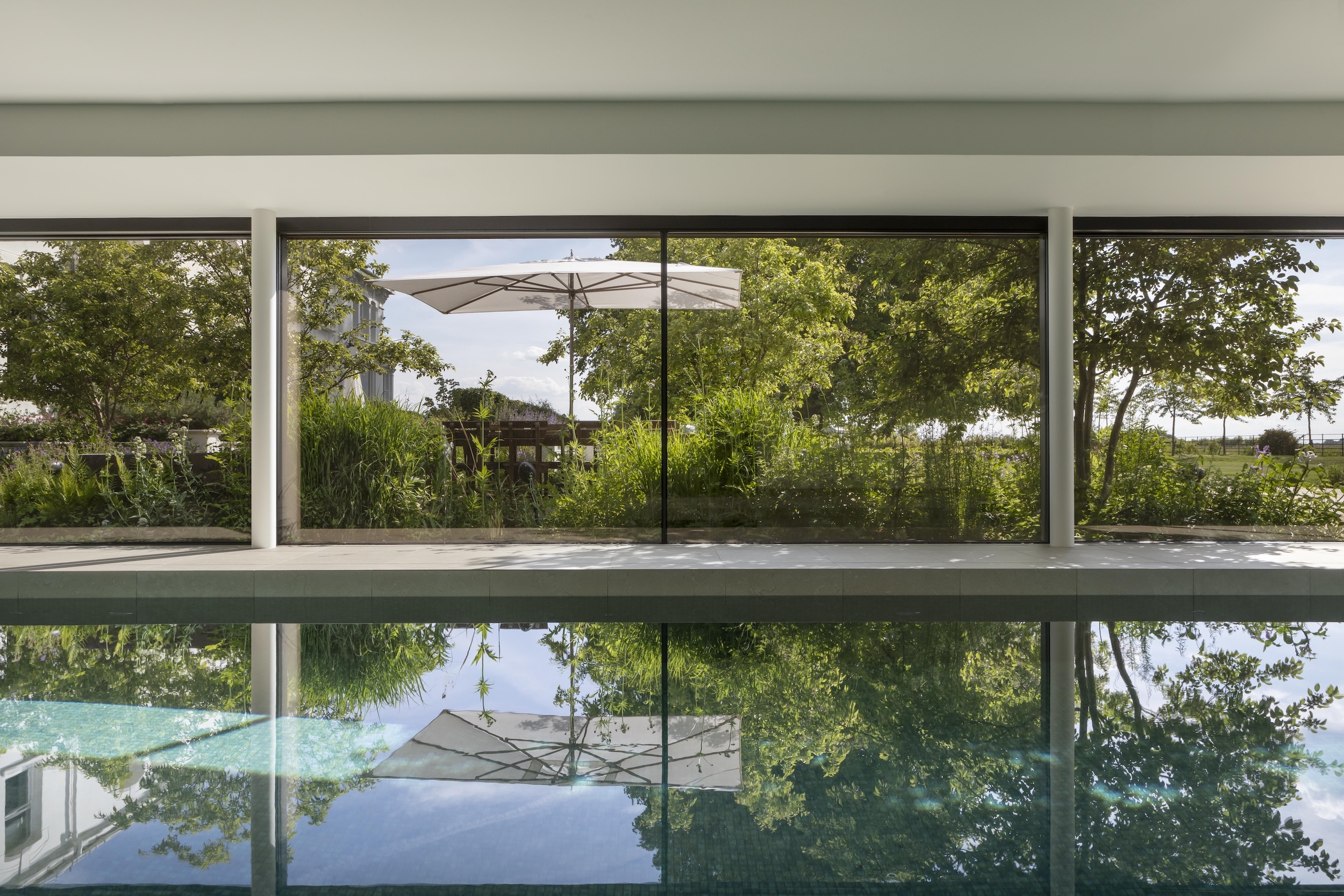
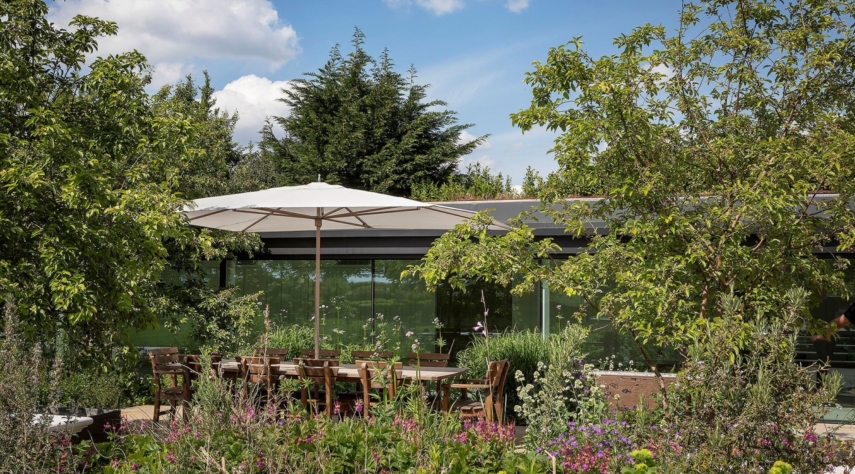
The Torban Hall legacy: part II — the pool house
A haven of leisure, relaxation, and most of all family.
Learn More